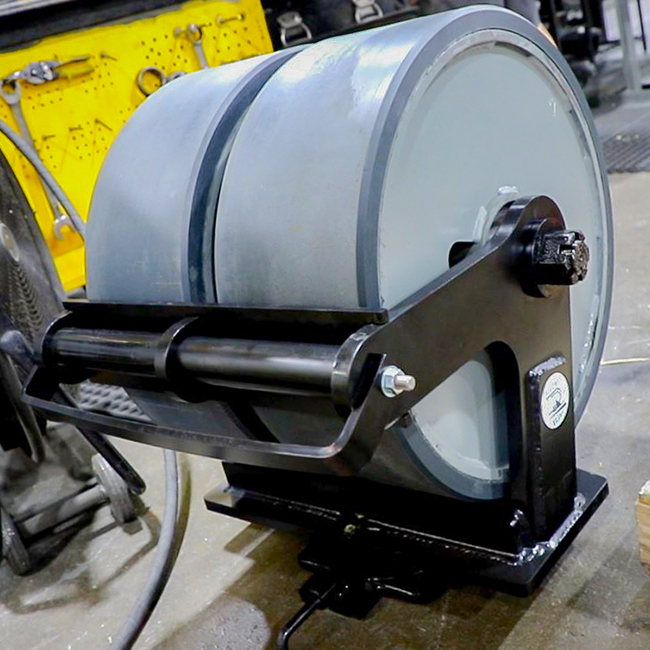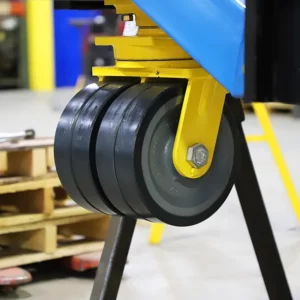

Dual Wheel Casters: When Two Wheels Are Better Than One.




HPPT Dual Caster
Updated 10.26.23
Dual wheel or double wheel casters can play important roles in facilities of all types, but what are the advantages of having two wheels in a caster instead of just one?
We’ll explore the benefits of dual wheel casters and why they might be the right choice for your applications, especially for certain applications centering on load capacity, space restrictions, and maneuverability.
To start, let’s start with what exactly a dual wheel caster is. These types of casters have two wheels for every plate. This allows them to bear more weight more evenly, which is an important consideration for heavy duty industrial applications. Now let’s look at some situations where a dual wheel caster might be the right choice for you.
Using Just One Wheel Isn’t Cutting It.
The number one reason why people choose double wheel options over their single wheel counterparts has to do with the weight of the load. Sometimes, a single caster wheel just isn’t enough to support an entire load.
Remember that weight limits apply to each wheel, so rather than having one large wheel that might be able to support 3,000 lbs, you could have two small wheels that support 2,500 lbs each, giving you a 5,000 lb. weight limit for that particular set of casters. This is important to consider, particularly when height and wheel size is a factor.
Dual Wheel Casters Help Keep a Cart Stay Lower to the Ground.
In most cases, larger casters support more weight. With that said, in order to move very heavy loads with single casters, you might find that the casters are so high that the load is higher than what is safe. With double wheel casters, you can easily reduce the height of the platform or cart without sacrificing its load-bearing capacity. In almost all cases, you can reduce the height by as much as 30% while maintaining the same capacity simply by making the switch to dual wheel casters.
The Cart Needs to Take Up Less Floor Space

 Many manufacturing facilities are quite busy, and there’s only so much space to go around. Oftentimes, carts designed to carry tremendous loads also take up a lot of floor space, which can cause problems in these facilities. Dual wheel casters allow you to spread a huge amount of weight proportionately over a bigger wheel surface. This weight distribution minimizes the damage to floors and reduces the overall size of the cart to save and saving space on the plant floor. In the grand scheme of things, this can make a tremendous difference.
Many manufacturing facilities are quite busy, and there’s only so much space to go around. Oftentimes, carts designed to carry tremendous loads also take up a lot of floor space, which can cause problems in these facilities. Dual wheel casters allow you to spread a huge amount of weight proportionately over a bigger wheel surface. This weight distribution minimizes the damage to floors and reduces the overall size of the cart to save and saving space on the plant floor. In the grand scheme of things, this can make a tremendous difference.
Carts Need to be More Maneuverable.


Dual Wheel Swivel Caster on NASA Cart
Another significant advantage of dual wheel casters lies in their maneuverability. Single-wheel casters are difficult to swivel and maneuver when they are under a great deal of pressure. The heavier the load, the harder it is for the wheel to move and swivel.
When you can distribute the load more evenly across more wheels (for example, eight wheels instead of just four), this reduces the pressure and friction on each wheel and makes it far easier to swivel and maneuver. Dual wheels reduce friction and “floor scrubbing,” which makes loads easier to move and may even reduce workplace injuries at the same time.
Dual wheel casters are not necessary for every application, but they can certainly come in handy. They can provide extra load-bearing capacity, they can safely keep loads lower to the ground, they can keep carts and racks smaller, and they can even increase a cart’s maneuverability, which helps improve workplace safety and morale. Still not sure if going dual is cool? Contact us for more information or call 888-986-0244. We can help.
Previous article
What is a Swivel on Swivel Caster?
Next article
5 Key Facts to Know Regarding Polyurethane Caster Wheels